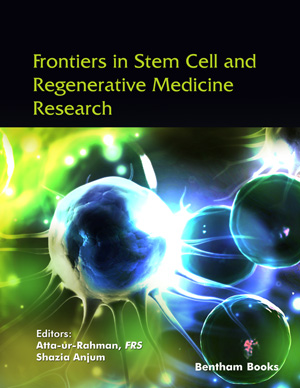Abstract
Background: Acute lung injury (ALI)/acute respiratory distress syndrome (ARDS) remains a serious clinical problem but has no approved pharmacotherapy. Mesenchymal stem cells (MSCs) represent an attractive therapeutic tool for tissue damage and inflammation owing to their unique immunomodulatory properties. The present study aims to explore the therapeutic effect and underlying mechanisms of human umbilical cord MSCs (UC-MSCs) in ALI mice.
Objective: In this study, we identify a novel mechanism for human umbilical cord-derived MSCs (UC-MSCs)-mediated immunomodulation through PGE2-dependent reprogramming of host macrophages to promote their PD-L1 expression. Our study suggests that UC-MSCs or primed- UC-MSCs offer new therapeutic approaches for lung inflammatory diseases.
Methods: Lipopolysaccharide (LPS)-induced ALI mice were injected with 5×105 UC-MSCs via the tail vein after 4 hours of LPS exposure. After 24 hours of UC-MSC administration, the total protein concentration and cell number in the bronchoalveolar lavage fluid (BALF) and cytokine levels in the lung tissue were measured. Lung pathological changes and macrophage infiltration after UCMSC treatment were analyzed. Moreover, in vitro co-culture experiments were performed to analyze cytokine levels of RAW264.7 cells and Jurkat T cells.
Results: UC-MSC treatment significantly improved LPS-induced ALI, as indicated by decreased total protein exudation concentration and cell number in BALF and reduced pathological damage in ALI mice. UC-MSCs could inhibit pro-inflammatory cytokine levels (IL-1β, TNF-α, MCP-1, IL-2, and IFN-γ), while enhancing anti-inflammatory cytokine IL-10 expression, as well as reducing macrophage infiltration into the injured lung tissue. Importantly, UC-MSC administration increased programmed cell death protein ligand 1 (PD-L1) expression in the lung macrophages. Mechanistically, UC-MSCs upregulated cyclooxygenase-2 (COX2) expression and prostaglandin E2 (PGE2) secretion in response to LPS stimulation. UC-MSCs reduced the inflammatory cytokine levels in murine macrophage Raw264.7 through the COX2/PGE2 axis. Furthermore, UC-MSC- derived PGE2 enhanced PD-L1 expression in RAW264.7 cells, which in turn promoted programmed cell death protein 1 (PD-1) expression and reduced IL-2 and IFN-γ production in Jurkat T cells.
Conclusion: Our results suggest that UC-MSCs attenuate ALI via PGE2-dependent reprogramming of macrophages to promote their PD-L1 expression.
Keywords: Human umbilical cord mesenchymal stem cells, acute lung injury, pulmonary inflammation, prostaglandin E2, programmed cell death protein ligand 1, cyclooxygenase-2.
Graphical Abstract
[PMID: 22797452]
[http://dx.doi.org/10.1001/jama.2017.21907] [PMID: 29466596]
[http://dx.doi.org/10.1038/s41467-019-12017-8] [PMID: 31534124]
[http://dx.doi.org/10.1016/j.phrs.2015.09.001] [PMID: 26361726]
[http://dx.doi.org/10.1007/s00281-017-0629-x] [PMID: 28466096]
[http://dx.doi.org/10.1160/TH17-05-0347] [PMID: 29202212]
[http://dx.doi.org/10.1097/01.CCM.0000081437.06466.B3] [PMID: 12907882]
[http://dx.doi.org/10.1111/jpi.12322] [PMID: 26888116]
[http://dx.doi.org/10.1152/ajplung.00367.2002] [PMID: 12922984]
[http://dx.doi.org/10.1097/01.ccm.0000435669.60811.24] [PMID: 24158164]
[http://dx.doi.org/10.1097/CCM.0b013e318298a6db] [PMID: 23982022]
[http://dx.doi.org/10.1097/01.CCM.0000133019.52531.30] [PMID: 15343007]
[http://dx.doi.org/10.1056/NEJMoa062200] [PMID: 16714767]
[http://dx.doi.org/10.1136/bmj.39537.939039.BE] [PMID: 18434379]
[http://dx.doi.org/10.1164/rccm.201604-0748CP] [PMID: 27786562]
[http://dx.doi.org/10.1056/NEJMoa051693] [PMID: 16625008]
[http://dx.doi.org/10.1146/annurev-physiol-030212-183756] [PMID: 23398155]
[http://dx.doi.org/10.1016/j.immuni.2011.05.006] [PMID: 21616434]
[http://dx.doi.org/10.1038/nri2395] [PMID: 19172693]
[http://dx.doi.org/10.1038/s41581-018-0023-5] [PMID: 29895977]
[http://dx.doi.org/10.1007/s00018-019-03125-1] [PMID: 31055643]
[http://dx.doi.org/10.1002/stem.1191] [PMID: 22865689]
[http://dx.doi.org/10.3727/096368915X686841] [PMID: 25622293]
[http://dx.doi.org/10.1186/s13287-020-01852-y] [PMID: 32746936]
[http://dx.doi.org/10.1128/IAI.72.12.7247-7256.2004] [PMID: 15557650]
[http://dx.doi.org/10.3390/ijms20092208] [PMID: 31060326]
[http://dx.doi.org/10.1073/pnas.1612920114] [PMID: 28096371]
[http://dx.doi.org/10.1164/rccm.201701-0170OC] [PMID: 28598224]
[http://dx.doi.org/10.1038/s41419-020-03034-3] [PMID: 33060560]
[http://dx.doi.org/10.1186/s13287-020-01963-6] [PMID: 33059757]
[http://dx.doi.org/10.1016/S2213-2600(14)70217-6] [PMID: 25465643]
[http://dx.doi.org/10.1038/nm.1905] [PMID: 19098906]
[http://dx.doi.org/10.1016/j.stem.2009.05.003] [PMID: 19570514]
[http://dx.doi.org/10.1111/jcmm.13574] [PMID: 29516621]
[http://dx.doi.org/10.1126/science.aad9903] [PMID: 26989254]
[http://dx.doi.org/10.1038/nrc.2016.36] [PMID: 27079802]
[http://dx.doi.org/10.4049/jimmunol.1900692] [PMID: 31704881]
[http://dx.doi.org/10.1165/rcmb.2017-0326OC] [PMID: 29220578]
[http://dx.doi.org/10.4049/jimmunol.1301828] [PMID: 24403533]












